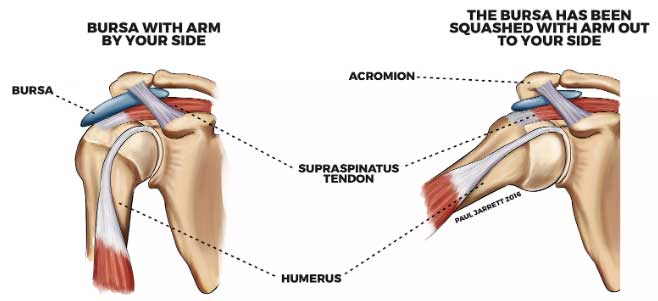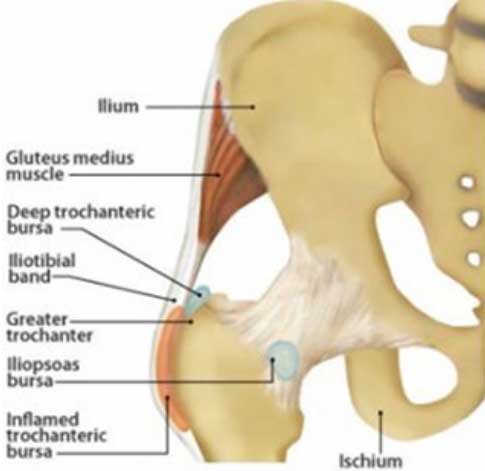Bursitis is inflammation of a bursa. A bursa is a fluid-filled sac that surrounds joints or tendons. A bursa reduces friction by cushioning muscles or tendons and bones that move back and forth across each other. The elbow, hip, knee, shoulder, and other joints contain a cushioning bursa. You could have pain in these areas that are caused by an inflamed bursa.
What causes bursitis?
Irritation, injury, or pressure to a bursa can cause inflammation, resulting in swelling and pain.
Causes of bursitis include:
- Injury of a joint from sports activities, such as baseball, football, tennis, soccer, golf, and running, can cause the disorder.
- Frequent irritation or friction on a body part from other activities, including everyday household jobs such as yard work, shovelling dirt or snow, and house painting, can cause bursitis.
- One of the most common areas where bursa gets inflamed is the shoulder. This will cause impingement and pinching when raising your arm above your shoulder.
Symptoms from a bursitis
Symptoms of bursitis usually include swelling, redness, and pain in the affected area, which is normally near a joint.
How is it diagnosed?
One of our Practitioners will examine you to determine if you have bursitis or another condition. These are some simple physical tests that can be done to assess this condition. Grouped together with a thorough case history and discussing your lifestyle, our practitioners should be able to diagnose the condition competently. Ultrasounds can be requested to confirm the diagnosis.
How is it treated and will it go away on its own?
To relieve symptoms of bursitis:
- Rest the affected area, such as the shoulder, elbow, knee, or hip.
- Do not put any pressure on the sore and swollen area until the swelling subsides.
- Put an ice pack on the area for up to 1 hour before going to bed.
- Maintain your range of motion by moving the joint to help keep the joints from getting stiff.
- Gradually build strength in the area with progressive strengthening exercises.
- You may need to rest from your sport. A practitioner will guide you through this.
How long will the effects last?
With treatment, the pain and swelling of bursitis usually clear up within 2 to 4 weeks.
How can I help prevent bursitis?
In its essence, bursitis is an inflammatory problem caused by excess strain on one part of the body. Keeping the body functioning well with regards to symmetry and range of motion may help prevent a build-up of abnormal forces in one area. This may reduce the onset of bursitis. Seeking regular visits with our practitioners at the clinic every 4-6 weeks, in our experience, has shown to be beneficial in reducing inflammatory conditions like bursitis.




